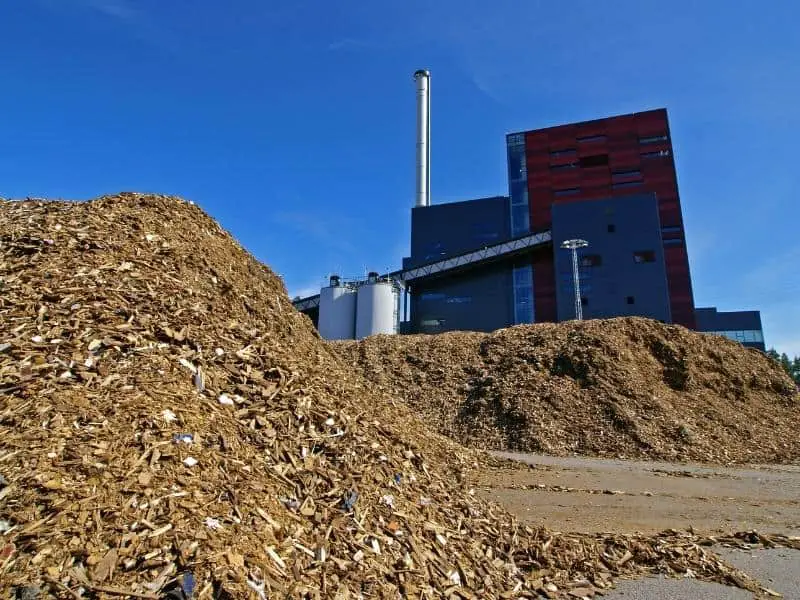The cost of energy is a major issue for American society. Due to the diminishing supply and the environmental concerns surrounding fossil fuels, alternative energy sources have been given a bigger role in powering the nation.
One major alternative power source is biomass. Like any new technology, the cost associated with biomass energy is unknown for most Americans. We will take a look at several forms of biomass energy in comparison to their conventional counterparts and the costs associated with each.
- Wood and agricultural waste.
- Solid trash waste.
- Liquid Bio-fuels.
- BioGas.
Every form of energy has production costs. Unfortunately, the cost of any energy source is very complex. In some cases, biomass energy is more expensive than conventional sources.
In other cases, it is not. Raw material, transport, and processing cost all contribute to the price of the final price of energy. Government subsidies add to the complexity of calculating the price the consumer pays for energy.

The Cost of Biomass Energy
Wood is the most basic form of biomass energy. Mankind has used it to create heat and steam for several thousand years. Today, wood and other forms of agricultural and trash-based biomass are burned mainly to create electricity.
There are advantages and disadvantages to the combustion of agricultural biomass.
Economic Aspects of Biomass For Electric Production.
Like any power plant, a biomass plant is a major investment. Construction costs of a biomass plant range between $3,000 and $5,000 per kilowatt of production capability.
The operation and maintenance of such a plant cost between $50 and $180 per megawatt-hour of production. Construction of a comparable petroleum-fired plant would cost between $1,000 and $1,500 per kilowatt of capacity.
Production at such plants runs between $40 and $110 per megawatt-hour.
Factors That Impact Electricity Production Costs
- Fuel cost.
- Material Transportation and handling costs.
- Power Plant Maint. Costs.
- Demand.
The cost of biomass electricity production is difficult to pin down. Biomass energy requires organic materials to burn. Growing seasons can impact supplies of fuel material. Demand for other agricultural products can create competition for fuel production space.
The handling and prep of trash-based materials is a major cost factor. The lower energy density of agricultural fuels creates higher transportation, handling, and storage costs than petroleum-based fuels.
Disposal of ash from biomass plants is another cost that petroleum-based plants do not have to deal with.
BioFuels
Since the gas wars of the 1970s, biofuels have become a major component of the power supply in the US. Today, biomass-based liquid fuel constitutes between 7 and 8 percent of US consumption.
These fuels include ethanol for gasoline-based fuels, bio-diesel, and jet fuel. The per-gallon price of all of these products fluctuates as does crude oil and gasoline. At times the bio-fuel is less expensive than its petroleum-based counterpart.
Average Fuel Prices Per Gallon – 2021
- Gasoline $2.17
- Regular Diesel $2.55
- BioDiesel (B20) $2.26
- BioDiesel (B100) $3.26
- Ethanol $1.88
Production of Bio-fuels
Bio-fuels are produced from a variety of raw materials. Some of these materials are grown specifically as fuel production materials. Others are waste materials that can be converted to fuel production.
Demand and the availability of materials make production prices fluctuate. Since the biofuel industry is fairly new, there are few dedicated raw material supply lines.
Farmers who grow bio-fuel materials one season may grow a food crop the next season if the profit margin is higher. Waste streams used for fuel production may become depleted or decrease due to some other economic stimulus.
Bio-Fuel Raw Materials
- Cellulose (wood, agricultural waste, paper waste, grasses, etc.)
- Algae
- Corn
- Soy
- Sugar Cane
- Animal fat.
A number of processes are used to convert biomass materials to biofuels. Both processes are energy, time, and labor-intensive.
BioDiesel
Transesterification is a chemical process used to convert fats and oils to bio-diesel. Raw materials are chemically treated to break down fat cells. Purification and filtration processes are employed to remove impurities and increase energy concentration.
Ethanol
Ethanol is a distillate made from fermented sugar. Raw materials are cooked to break down the cellulose material and release the sugar. After fermentation, the alcohol is distilled to condense the fuel.
BioGas
Methane can be collected from anaerobic decomposition or thermochemical conversion of biomass. The raw materials for this type of gas are wastes products. A key benefit of biogas collection is environmental.
Methane is a major greenhouse gas. Collection of the gas provides an inexpensive fuel source while helping reduce greenhouse gas emissions.
The infrastructure and handling of these gasses are the only production costs. However, in some cases even those costs are prohibitive.
Landfill Gas
Gas collected from decomposing landfills or sewage facilities is a usual source of biogas. The Clean Air Act requires that landfills of a specific size must install gas collection and containment systems.
After some minor treatment to purify the gas, producers often burn or sell the gas as an alternative fuel. In 2020 nearly 250 billion cubic feet of landfill gas were collected and burned in US power plants to produce approximately 10 billion kilowatt-hours of electricity.
Sewage and Agricultural Waste Gas
Many sewage and agricultural waste facilities collect their waste materials. Animal waste, food waste, paper pulp, and other industrial agriculture wastes are collected and processed to produce methane.
These materials are treated in anaerobic digesters to process and refine the gas. In 2020 approximately 1 billion kilowatt-hours of electricity were produced in the US using Agriculture Waste gas.
Federal Subsidies For Energy
It is difficult to define the real cost of energy in the US. Estimates put the subsidies to the fossil fuel industry in the US at over $20 billion annually. Biomass energy is subsidized in excess of $5 billion.
These are conservative estimates. Between direct subsidies and tax incentives being applied at each step of the production process at both the federal and state level, putting an actual price on any fuel is difficult.
Rest assured, the price we pay is not the REAL price of any form of energy.
Resources



